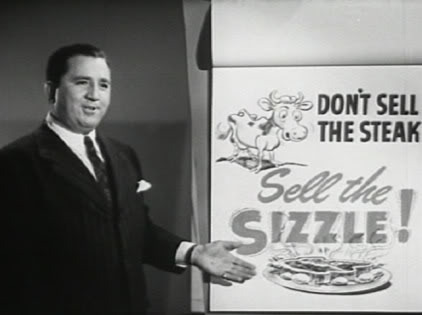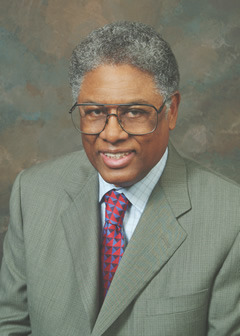Marty Nemko's Blog, page 423
February 1, 2014
How to Learn to Play the Piano By Ear--(Perhaps) All You Need to Know in Six Minutes
Update: This video wasn't originally in this post but a reader asked me to create one, so I've added it here and in a separate post I've just posted.
Many people take piano lessons with the goal of easily playing songs by ear, for example, at a party.
Yet the way they're taught, that rarely happens. They're taught mainly to read music. That doesn't develop your ear because you're translating what you see on the page to what you play with your fingers. Your ear is left out of the process.
If you aren't tone deaf, I'm guessing that the following is an efficient way to learn to play by ear. It's how I learned to.
Any keyboard will do but this Yamaha, for $249, is a good choice for a beginner.
The video above demonstrates the method. But here, below, is a text version.
1. Using trial and error, try to, by ear, with your right index finger, plunk out Mary Had a Little Lamb. Stay with it it until you can play it at the standard tempo. Each time you guess a note right or wrong, you're getting feedback on what the interval between two piano keys sounds like. Your ear, your ability to pick the right note to play, is thus constantly getting better.
2. After you can reliably plunk out Mary Had a Little Lamb with one finger, with the index finger of your left hand, try, again using trial and error, to play a note that sounds harmonious with the note you're playing in the right hand. Play one note on every beat. I show the beats in red CAPS:
MAry HAD a LIttle LAMB, LIttle LAMB, LIttle LAMB,
MAry HAD a LIttle LAMB,
Its FLEECE was WHITE as SNOW.
3. When you can reliably do that, add a harmony note to the RIGHT hand on each beat. Again, trial and error. Each error and each success builds your ear's ability to predict what will likely sound good.
4. Repeat steps 1-3 with other easy songs you can easily hum. It's best to start with songs with a short distance between most notes. Examples: Do-Re-Mi, Jingle Bells, Yankee Doodle.
If I'm right, with far less practice than is required with traditional lessons, you'll be able to play, with harmony and rhythm, anything you can hum.
This method could take you quite far. I learned piano playing this way and playing purely by ear, without reading music, I played over 2,000 union-professional gigs (including in brand-name orchestras like Lester Lanin, Peter Duchin, and Dwight Howard) in New York City between ages 12 and 22.
At age 50, I developed a hand condition, which rendered me a seven-fingered pianist but HERE is what I sound like with seven fingers. Of course, I'm playing by ear. The beginning isn't much but you might want to listen to all 3 1/2 minutes.
Feel free to write a comment letting me know how well this method is working for you or if you have any questions.
Published on February 01, 2014 09:43
How to Learn to Play the Piano By Ear
 Many people take piano lessons in with the goal of easily playing songs by ear, for example, at a party.
Many people take piano lessons in with the goal of easily playing songs by ear, for example, at a party.Yet the way they're taught, that rarely happens. They're taught mainly to read music. Rather than developing your ear, that atrophies your ear because you're translating what you see on the page to what you play with your fingers. Your ear is left out of the process.
If you aren't tone deaf, I'm guessing that the following is an efficient way to learn to play by ear. It's how I learned to.
Any keyboard will do but this Yamaha, for $249, is a good choice for a beginner.
1. Using trial and error, try to, by ear, with your right index finger, plunk out Mary Had a Little Lamb. Stay with it it until you can play it at the standard tempo. Each time you guess a note right or wrong, you're getting feedback on what the interval between two piano keys sounds like. Your ear, your ability to pick the right note to play, is thus constantly getting better.
2. After you can reliably plunk out Mary Had a Little Lamb with one finger, with the index finger of your left hand, try, again using trial and error, to play a note that sounds harmonious with the note you're playing in the right hand. Play one note on every beat. I show the beats in red CAPS:
MAry HAD a LIttle LAMB, LIttle LAMB, LIttle LAMB,
MAry HAD a LIttle LAMB,
Its FLEECE was WHITE as SNOW.
3. When you can reliably do that, add a harmony note to the RIGHT hand on each beat. Again, trial and error. Each error and each success builds your ear's ability to predict what will likely sound good.
4. Repeat steps 1-3 with other easy songs you can easily hum. It's best to start with songs with a short distance between most notes. Examples: Do-Re-Mi, Jingle Bells, Yankee Doodle.
If I'm right, with far less practice than required with traditional lessons, you'll be able to play, with harmony and rhythm, anything you can hum.
This method could take you quite far. I learned piano playing this way and playing purely by ear, without reading music, I played over 2,000 union-professional gigs (including in brand-name orchestras like Lester Lanin, Peter Duchin, and Dwight Howard) in New York City between ages 12 and 22.
At age 50, I developed a hand condition, which rendered me a seven-fingered pianist but HERE is what I sound like with seven fingers. Of course, I'm playing by ear. The beginning isn't much but you might want to listen to all 3 1/2 minutes.
Feel free to write a comment letting me know how well this method is working for you or if you have any questions.
Published on February 01, 2014 09:43
January 31, 2014
Why Employers Want More H1-B Employees When Half of U.S.College Grads Are Un- and Underemployed
 A new report, ironically conducted by university researchers, indicates that more than half of employers are unhappy with today's crop of U.S.college graduates, for example, that many are seriously lacking in thinking skills, writing, etc.
A new report, ironically conducted by university researchers, indicates that more than half of employers are unhappy with today's crop of U.S.college graduates, for example, that many are seriously lacking in thinking skills, writing, etc.That's no surprise because the vast majority of our 1,500 four-year (a misnomer) colleges, are 98.6 schools: virtually all you need to get in is normal body temperature--Have you tried to engage in an intelligent conversation with the typical undergraduate at, say, Middle Tennessee State University?
So, except at the small percentage of elite institutions, professors have been forced to dumb-down classes. leaving the bright bored and the slow still bewildered. Indeed, other studies, notably this major nationwide study show almost half of college students grow little or not at all in writing and thinking skills.
As a result, an American college degree, despite taking years and costing a true fortune, no longer signifies competence in reading, writing thinking, etc. It more likely signifies that the student has been liberalized or radicalized, which may demotivate them as employees. Indeed the aforementioned new study speaks of employers frustrated with the today's American college graduates' lack of work ethic.
Is it any wonder why 53.6 percent of college graduates are un- or underemployed at the same time as companies are urging expansion of the H1-B visa program so they can hire more foreigners?
And if that's the state of U.S.college graduates, imagine what the 46 percent of freshmen are like who, even if given six years, don't graduate?
Macbeth concluded that life is "full of sound and fury and signifying nothing." Might that increasingly be applied to American undergraduate education?
Published on January 31, 2014 08:51
January 28, 2014
HYPE!: We Choose Image Over Substance, Brand Over Value, Sizzle Over Steak
Perhaps you'd enjoy an advance look at my next Life Well-Led column in the Mensa publication, The Intelligencer. It's just a draft. I've not yet submitted it, so your feedback is especially welcome.
 The Life Well-LedBy Marty Nemko
The Life Well-LedBy Marty Nemko
Choosing Steak Over Sizzle
It’s ironic that we claim to crave authenticity yet often succumb to hype, to sizzle over steak. Examples:
We tend to value people who are “nice” more than people who are good. For example, no matter how brilliant you are, if you’re not “nice,” for example, you’re pushy with your brilliance, you’re likely to be dismissed. We’re suckers for those friendly smilers even though, as Hamlet wrote in his tablet, “One may smile, and smile, and be a villain.” Sizzle over steak.
It seems there are more exhortations to network than to build skills. That, of course, leads to hiring based as much on connections as on competence. Not the stuff of which a good world is built. Sizzle over steak.
Helen Gurley Brown, long-time Cosmopolitan editor-in-chief, said, “After a while, it all comes down to posture.” (Chin up, shoulders back, back straight, chest out.) Sizzle over steak.
If we can afford it and sometimes even if we can’t, we buy Yves San Laurent rather than the knock-off, even though it costs much more. We buy a $25 bottle of wine instead of Trader Joe’s “Two Buck Chuck” even though studies find that very few people can tell the difference let alone believe the difference in taste is worth the cost. Au contraire, Consumer Reports rated Two Buck Chuck at the top of both its red and white wine ratings, over far more expensive bottles. We buy Mercedes over Toyota, even though Mercedes costs more and breaks down more. We buy U.C. Berkeley over Occidental (President Obama’s alma mater) even though it’s more difficult to learn in Berkeley’s notorious auditorium-sized lectures taught by research-first professors who, in science and math, may speak English so poorly, you can’t even understand what already is a difficult subject. Ah, but the name Berkeley: “It opens doors!” Sizzle over steak.
Is it hopeless? Is it stolid human nature to choose the easy way out? True, it’s easier to smile and schmooze than to do the hard work of becoming a more productive professional and better human being. True, it’s easier to impress with that designer label on your diploma and on your ass than by being substantively impressive.
But I’m not convinced it’s hopeless, especially for Mensans. Should you try to more consciously assess whether you’re giving too much weight to sizzle than to steak? A few examples:
If you’re deciding how to allocate your professional development time, should you focus less on networking and more on, for example, studying, perhaps with a tutor or mentor, to become a more competent professional?
If you’re a boss interviewing job applicants, should you be more skeptical of the candidate who obviously spent big money and effort to look “perfect:” alligator shoes matching an alligator attaché case, a $100 haircut, $1,000 suit and $10,000 watch? How likely is it that s/he spends so much on self-packaging to try to compensate for lack of competence or work ethic? At least among my 4,400 career coaching clients and the many other people I’ve come to know in my 63 years, most substantive people don't go to great lengths to gift-wrap themselves.
Before buying an item whose price is elevated because of its frou-frou brand, might you want to more consciously weigh if the extra cost is worth it? After all, beyond the dollar-cost, you may, ironically, pay a price in how you’re perceived. Many substantive people think less of you for having bought something whose price far exceeds its value. For example, think of how you feel about a person who's wearing a gold Rolex watch?
If we claim to crave more authenticity, to want a better world, perhaps it's worth being more vigilant to our and others’ attempts to prioritize sizzle over steak.
 The Life Well-LedBy Marty Nemko
The Life Well-LedBy Marty NemkoChoosing Steak Over Sizzle
It’s ironic that we claim to crave authenticity yet often succumb to hype, to sizzle over steak. Examples:
We tend to value people who are “nice” more than people who are good. For example, no matter how brilliant you are, if you’re not “nice,” for example, you’re pushy with your brilliance, you’re likely to be dismissed. We’re suckers for those friendly smilers even though, as Hamlet wrote in his tablet, “One may smile, and smile, and be a villain.” Sizzle over steak.
It seems there are more exhortations to network than to build skills. That, of course, leads to hiring based as much on connections as on competence. Not the stuff of which a good world is built. Sizzle over steak.
Helen Gurley Brown, long-time Cosmopolitan editor-in-chief, said, “After a while, it all comes down to posture.” (Chin up, shoulders back, back straight, chest out.) Sizzle over steak.
If we can afford it and sometimes even if we can’t, we buy Yves San Laurent rather than the knock-off, even though it costs much more. We buy a $25 bottle of wine instead of Trader Joe’s “Two Buck Chuck” even though studies find that very few people can tell the difference let alone believe the difference in taste is worth the cost. Au contraire, Consumer Reports rated Two Buck Chuck at the top of both its red and white wine ratings, over far more expensive bottles. We buy Mercedes over Toyota, even though Mercedes costs more and breaks down more. We buy U.C. Berkeley over Occidental (President Obama’s alma mater) even though it’s more difficult to learn in Berkeley’s notorious auditorium-sized lectures taught by research-first professors who, in science and math, may speak English so poorly, you can’t even understand what already is a difficult subject. Ah, but the name Berkeley: “It opens doors!” Sizzle over steak.
Is it hopeless? Is it stolid human nature to choose the easy way out? True, it’s easier to smile and schmooze than to do the hard work of becoming a more productive professional and better human being. True, it’s easier to impress with that designer label on your diploma and on your ass than by being substantively impressive.
But I’m not convinced it’s hopeless, especially for Mensans. Should you try to more consciously assess whether you’re giving too much weight to sizzle than to steak? A few examples:
If you’re deciding how to allocate your professional development time, should you focus less on networking and more on, for example, studying, perhaps with a tutor or mentor, to become a more competent professional?
If you’re a boss interviewing job applicants, should you be more skeptical of the candidate who obviously spent big money and effort to look “perfect:” alligator shoes matching an alligator attaché case, a $100 haircut, $1,000 suit and $10,000 watch? How likely is it that s/he spends so much on self-packaging to try to compensate for lack of competence or work ethic? At least among my 4,400 career coaching clients and the many other people I’ve come to know in my 63 years, most substantive people don't go to great lengths to gift-wrap themselves.
Before buying an item whose price is elevated because of its frou-frou brand, might you want to more consciously weigh if the extra cost is worth it? After all, beyond the dollar-cost, you may, ironically, pay a price in how you’re perceived. Many substantive people think less of you for having bought something whose price far exceeds its value. For example, think of how you feel about a person who's wearing a gold Rolex watch?
If we claim to crave more authenticity, to want a better world, perhaps it's worth being more vigilant to our and others’ attempts to prioritize sizzle over steak.
Published on January 28, 2014 12:47
January 27, 2014
How to Land a Good Job in a Tough Market
 It's ever harder even for good candidates to land a good job. Truly advanced strategies are often required.
It's ever harder even for good candidates to land a good job. Truly advanced strategies are often required.So this Saturday, Feb. 1, the University of California Berkeley Extension has asked me back to lead an all-day bootcamp on landing a good job in a tough market.
It's open to the public. For details and registration, click HERE.
Published on January 27, 2014 13:42
January 22, 2014
Thomas Sowell: "Fact-Free Liberals"
 I rarely repost others' work but I find this article, Fact-Free Liberals, fabulous.
I rarely repost others' work but I find this article, Fact-Free Liberals, fabulous.In the article, its author,Thomas Sowell, cites example after example of liberals' rhetoric and public policy recommendations belying the facts and data.
Published on January 22, 2014 23:41
Succession Planning: Finding and Grooming Your Replacement
 Note: I'll also discuss this topic on my radio show, Work with Marty Nemko, this Sunday from 11 AM to noon on KALW 91.7 FM (NPR-San Francisco.)
Note: I'll also discuss this topic on my radio show, Work with Marty Nemko, this Sunday from 11 AM to noon on KALW 91.7 FM (NPR-San Francisco.)Whether you’re a clerk or a CEO, the time to leave will arrive. Often that’s not easy, practically or psychologically. I hope this will help.
The big-picture ideas First of all, try to ensure you’ll be moving to something better: a better job, a rewarding retirement, etc. That will make it easier to be your best self in recruiting and grooming your replacement.
But even if you’re about to be dumped without a good future in the offing, remember that an important part of your legacy is to find and mentor someone even better than you are, at least better for your workplace’s next few years. So beware of the human tendency to pick someone inferior so you look better in comparison. The mature person realizes that such sabotage hurts not only the organization and deprives a more qualified person of the position, but it cheapens you.
After selecting your replacement, try to be the wisest, kindest mentor you can be. That means, yes, sharing what you’ve learned on the job and what you think is most needed moving forward, but also recognizing that you’re not trying to create a clone of yourself. Your successor will bring his or her own talents, desires, and limitations. Part of your job is to facilitate that person’s being their best self.
A step-by-step plan That’s the macro advice, Here is a step-by-step model for preparing to pass the baton. Of course, you may need to modify this plan to suit your circumstances.
1. Form a small selection committee: for example, your boss, a key coworker(s,) and key customer. In developing your successor’s job description, rather than listing what you’ve done, have it reflect what's most needed during the next few years.
Danger: Committees tend to stuff the job description with too many requirements. Pare down to what’s really important. That will help you screen applicants based on what really matters. That also avoids your creating a job description so intimidating that even good candidates are deterred from applying.
2. Using that job description as a screening tool, consider your employees both one and two layers beneath you. Sometimes, a rising star could be the wisest choice even if that person isn’t “next in line.”
Ask employees to recommend candidates outside your organization. Often the best outside applicants come from referral, not from an ad.
In screening candidates, give a plus to internal candidates. They are a known commodity and have valuable insider knowledge. But also seriously consider outsiders, especially stars at your competitors. Not all excellence resides within your organization.
If no standout candidate exists within your organization, consider recruiting an outsider for a lower position and then groom the person so he or she is ready to assume your position by the time you leave.
Do make your selection process open and transparent. You don’t want to end up with disgruntled applicants, especially those who work for your organization.
Err on the side of picking a younger person. You don’t want to spend all the effort grooming someone only the person to retire soon.
Usually, the right candidate immediately stands out. The person’s performance has been excellent and temperamentally is right for the job.
3. The selection process should contain simulations of tough tasks required on the job. Don’t place much stock in candidates’ answers to interview questions. Even if you ask uncoachable questions, the interview is a poor predictor of job performance.
4. When you’ve selected your replacement, make clear that it’s a tentative selection. Start the grooming process and if things aren’t working out well, either of you can back out before the deal is finalized.
5. Individualize the grooming process. That can consist of some combination of their job shadowing you, you observing them, inviting them to increasingly take your responsibilities, having weekly mentoring meetings, and inviting ongoing questions.
6. To keep the person from leaving soon after you’ve invested considerable time in him or her, consider creating a golden handcuff—for example, deferred compensation that becomes payable a year after s/he assumes your position.
7. After the person replaces you, decide if it’s wise for you to stay on the job for a few months or even a year after passing the baton. If so, make the case to your boss, if you have one.
8. Leave feeling you’ve left a worthy legacy. Now you can move on—perhaps with help from colleagues and friends--to figuring out how to make the next phase of your life your best yet.
If you want someone to take over the business you own
If you’re looking for someone to take over your business, try to dispassionately weigh the pros and cons of leaving it to a family member. You don’t have to hurt your business just because you care about your child. If s/he isn’t the right person to run your business, ultimately you do a disservice both to your child and to the business you worked so hard to create.
Also think twice before selling your business to someone you think is likely to cheapen the product and/or provide worse service just to make a few extra bucks. You’re selling your legacy. Treat it like the treasure it is.
Published on January 22, 2014 19:28
January 21, 2014
Redistribution Toward Egalitarianism: Positive and Negative Outcome Scenarios
 We are in an era of calls for increased egalitarianism, redistribution from society's haves to its have-nots. The terms vary, for example, "reduce income inequality," "social justice," "close the achievement gap," but the meaning is the same: redistribute.
We are in an era of calls for increased egalitarianism, redistribution from society's haves to its have-nots. The terms vary, for example, "reduce income inequality," "social justice," "close the achievement gap," but the meaning is the same: redistribute.Redistribution already has many manifestations in public policy. For example:
 A progressive income tax in which the top 5 percent of earners already pay 59 percent of the tax but the call is to additionally "soak the rich."Welfare/food stamps/subsidized housing. There now are 47.4 million people on food stamps, one in six adults. File "sharing." Producers of music, especially record companies have more money than the pool of illegal downloaders. File "sharing" (stealing) redistributes to lower-income people. Congress, last week, held a hearing to explore legalizing file sharing.Extending unemployment benefits. The pool of taxpayers (predominantly working people) are 'haves" compared with the unemployed, so extending unemployment checks to 99 weeks redistributes more money to lower-income people. Raising the minimum wage. That redistributes money to the poor not only from the employer but from the customer. Why? When the minimum wage rises, for example, in a fast food restaurant, the employer raises prices. That forces the customers (disproportionately of modest income) to pay for that redistribution to lowest-wage workers. And do remember that the people who end up working in fast-food restaurants didn't end up there at random. Better-paid workers generally, for example, were willing to defer gratification and income by attending college. Disparate impact policies.The current federal government wants to prohibit use, for example, of credit checks or being long-term unemployed as a criterion for employment or apartment rental because it has disparate impact on people of color. As a result, we have the Alice-in-Wonderland reality that people who have good credit and been employed are penalized.No Child Left Behind--the dominant federal education policy--mandates carrots and sticks for dealing with low-achieving kids but none for average and high achievers. As a result, schools have dumbed down their curriculum, disproportionately benefiting low-income kids and hurting everyone else. Most colleges admit weaker students if they come from low-income households. Also, colleges employ Robin Hood pricing: Overcharge the middle- and upper income people to subsidize the poor. In addition, government financial aid redistributes from the taxpayer to a pool of lower-income people. Some employers, in part because of government and activists' pressure, use reverse discrimination in hiring and promotion. ObamaCare redistributes the health care pie to the poor from everyone else. The number of doctors, nurses, MRI machines, operating rooms, etc will grow too slowly to accommodate the planned 40 million additional covered people plus 1.7 million illegals when President Obama achieves his promise to legalize them. That will mean 50+ million disproportionately lower-income people with high health care needs will take a larger share of the health care pie but pay little into the system. They will be paid for by employers and, indirectly by employees because their premiums will be raised to compensate for the costs of providing health care to the poor. The already overwhelmed health care system kills 440,000 people a year just in hospitals because of medical errors. The result of adding 50+ million more who pay little will mean that their addition will kill many thousands of people who do pay for health care. That may be the ultimate redistribution. Legalizing the illegal immigrants. Poor people who sneaked into the U.S. illegally and their families will receive the benefits of US citizens, compliments of the taxpayer.Nonprofits' mission is to solicit donations from the "haves" to redistribute to the have-nots: literacy, food, health, etc, here and worldwide.Indeed, redistribution policies extend beyond the U.S., for example, foreign aid from the U.S. and other developed nations to "developing" nations. Another example: the World Bank and EU pressures successful countries to bail-out unsuccessful ones such as Greece or Rwanda, and for private banks to forgive loans to developing nations. And a catchall: In every industry, nonprofit, and government agency, in recent years the focus has been redistributed from what's best overall for society or for the middle class to how to better serve the have-nots. All of this of course is fueled by a media that disproportionately does stories praising redistribution.
A progressive income tax in which the top 5 percent of earners already pay 59 percent of the tax but the call is to additionally "soak the rich."Welfare/food stamps/subsidized housing. There now are 47.4 million people on food stamps, one in six adults. File "sharing." Producers of music, especially record companies have more money than the pool of illegal downloaders. File "sharing" (stealing) redistributes to lower-income people. Congress, last week, held a hearing to explore legalizing file sharing.Extending unemployment benefits. The pool of taxpayers (predominantly working people) are 'haves" compared with the unemployed, so extending unemployment checks to 99 weeks redistributes more money to lower-income people. Raising the minimum wage. That redistributes money to the poor not only from the employer but from the customer. Why? When the minimum wage rises, for example, in a fast food restaurant, the employer raises prices. That forces the customers (disproportionately of modest income) to pay for that redistribution to lowest-wage workers. And do remember that the people who end up working in fast-food restaurants didn't end up there at random. Better-paid workers generally, for example, were willing to defer gratification and income by attending college. Disparate impact policies.The current federal government wants to prohibit use, for example, of credit checks or being long-term unemployed as a criterion for employment or apartment rental because it has disparate impact on people of color. As a result, we have the Alice-in-Wonderland reality that people who have good credit and been employed are penalized.No Child Left Behind--the dominant federal education policy--mandates carrots and sticks for dealing with low-achieving kids but none for average and high achievers. As a result, schools have dumbed down their curriculum, disproportionately benefiting low-income kids and hurting everyone else. Most colleges admit weaker students if they come from low-income households. Also, colleges employ Robin Hood pricing: Overcharge the middle- and upper income people to subsidize the poor. In addition, government financial aid redistributes from the taxpayer to a pool of lower-income people. Some employers, in part because of government and activists' pressure, use reverse discrimination in hiring and promotion. ObamaCare redistributes the health care pie to the poor from everyone else. The number of doctors, nurses, MRI machines, operating rooms, etc will grow too slowly to accommodate the planned 40 million additional covered people plus 1.7 million illegals when President Obama achieves his promise to legalize them. That will mean 50+ million disproportionately lower-income people with high health care needs will take a larger share of the health care pie but pay little into the system. They will be paid for by employers and, indirectly by employees because their premiums will be raised to compensate for the costs of providing health care to the poor. The already overwhelmed health care system kills 440,000 people a year just in hospitals because of medical errors. The result of adding 50+ million more who pay little will mean that their addition will kill many thousands of people who do pay for health care. That may be the ultimate redistribution. Legalizing the illegal immigrants. Poor people who sneaked into the U.S. illegally and their families will receive the benefits of US citizens, compliments of the taxpayer.Nonprofits' mission is to solicit donations from the "haves" to redistribute to the have-nots: literacy, food, health, etc, here and worldwide.Indeed, redistribution policies extend beyond the U.S., for example, foreign aid from the U.S. and other developed nations to "developing" nations. Another example: the World Bank and EU pressures successful countries to bail-out unsuccessful ones such as Greece or Rwanda, and for private banks to forgive loans to developing nations. And a catchall: In every industry, nonprofit, and government agency, in recent years the focus has been redistributed from what's best overall for society or for the middle class to how to better serve the have-nots. All of this of course is fueled by a media that disproportionately does stories praising redistribution. As a thought experiment, here I lay out a positive and a negative scenario of what might occur as a result of our accelerating trend toward egalitarianism. Yes. we see headlines lamenting the tiny sliver of people who earn big incomes (like top CEOs) but the middle class is hollowing out as we redistribute ever more to the poor. Even if we tax the rich at 100%, they represent too small a percentage of the population to provide a solid existence for the poor. To do serious redistribution, we must soak not only the rich but the middle class.
Assumptions
Immigration, differential birth rates, the Democrats' superior ground game and Internet marketing, and making Puerto Rico and D.C. the 51st and 52nd states, will result in an ever more Democratic-run government, resulting in ever more redistribution. Within 20 to 30 years, except for the tiniest sliver of the ultra-wealthy, most people will be living at about 200% of the poverty line, approximately $45,000 in today's dollars for a family of four. People will thus afford only basic food, clothing, shelter, education, and health care. As a result, whole industries, for example, car manufacturers, will not be able to survive because few could afford a new car. As a result, government will nationalize it, making only tiny utilitarian vehicles, which could be sold new for under $10,000 like the Tata Nano. The shutting down of industries producing non-essentials will cause an even greater shortage of jobs, and the egalitarian ethos will result in government passing a 20-hour maximum workweek.
A positive scenario
The deemphasis on material acquisition will result in people living more rewarding lives, finding pleasure in creative expression, relationships, and life's simple pleasures: nature, beauty, sex, etc. The more egalitarian society will reduce competition and increase cooperation among people, reducing stress and increasing a communal sense of purpose. The small percentage of entrepreneurial types will start small businesses, mainly simple service businesses: repairing, garden plot preparation, artistic performance, etc. While health care won't be as good, the lower stress lifestyle will result in less need for elaborate health care and people will come to accept dying without high-tech intervention. The more cooperative, less materialistic society, with most people being of relative equal financial condition, will result in less violence. Life will resemble that on an Israeli kibbutz.
A negative scenario
The lack of financial incentive will make most people work minimally. That will cause the food and service shortages that existed in the Communist Soviet Union, Eastern Europe and exist today in Cuba and socialist countries such as Venezuela and Bolivia. As is often the case with welfare recipients, a very egalitarian society will cause an increase in entitlement and frustration with shortages and, in turn, an increase in drug abuse to anesthetize the pain and in violent social upheaval as has occurred in recent years in, for example, the thousands of car torchings in socialist France. For example, gangs will flash-mob-invade the homes of people who have more than they do and rob them empty. Life in the U.S. will become more like life in a "developing" nation.
Which scenario do you think is more likely?
Published on January 21, 2014 23:15
January 15, 2014
Lessons from Losing My Dog
 Today, I took my doggie Einstein on an off-leash trail we've taken dozens of times.
Today, I took my doggie Einstein on an off-leash trail we've taken dozens of times.Every time, it's the same: Einstein often lags 10 to 30 yards behind--smelling, peeing, pooping, saying hello to other doggies--then racing to catch up with me. Or if 30 seconds or so passes without my seeing him, I turn around to make sure he's close by or I call him, in which case he always immediately races to catch up to me.
Until today. Thirty seconds had transpired so I turned around to see if Einstein was close enough: No Einstein. "Einstein" No Einstein. "Einstein!" No Einstein. "Einstein, wanna treat!" No Einstein.
I retrace my steps and call his name, probably 100 times by the time I return to the car. No Einstein. I alternate between being panicked and trying to make peace with the fact I'd never see Einstein again.
Long story short, two hours later, I get a call from a professional dog walker, Leah, who, on a side trail, had used a dog whistle to call one of her dogs. Einstein apparently likes dog whistling, so he ran to Leah, apparently out of earshot of my calling him.
Leah immediately tried to call me on her cell phone but she has poor vision and couldn't quite read the phone number on Einstein's tag and so called the wrong number. It was two hours later when she decided to take a closer look at the phone number and realized she had read a "2" as a "3," so now could reach me. Meanwhile, for the two hours, Leah reported that Einstein was happy as could be, never showing a hint of missing me, her devoted caretaker.
Lessons learned:
1. Alas, even our most comfortable rituals can be disrupted, potentially with serious results.
2. The notion that doggies are loyal, man's best friend, may require revision. Doggies are loyal unless perhaps there's another doggie or nice person around.
3. There's a lot of luck in the world. If Leah had normal vision, she would have reached me instantly, saving me two hours of agony. If she happened to have been a bad person, she could have stolen my Einstein.
But in the end, as I write this, Einstein is sleeping on the doggie bed that's next to my desk, and life is back to normal.
Oh and that's lesson #4:
4. Life back to normal is a pretty good thing, something we shouldn't take for granted.
Published on January 15, 2014 21:24
Lessons from Losing Your Dog
 Today, I took my doggie Einstein on an off-leash trail we've taken dozens of times.
Today, I took my doggie Einstein on an off-leash trail we've taken dozens of times.Every time, it's the same: Einstein mostly lags 10 to 50 yards behind--smelling, peeing, pooping, saying hello to other doggies--and then racing to catch up with me. Or if 30 seconds or so passes without my seeing him, I turn around to make sure he's close by or I call him, in which case he always immediately races to catch up to me.
Until today.Thirty seconds had transpired so I turned around to see if Einstein was close enough: No Einstein. "Einstein" No Einstein. "Einstein!" No Einstein. "Einstein, Wanna treat!" No Einstein.
I retrace my steps and call his name, probably 100 times by the time I returned to the car. No Einstein. I alternate between being panicked and trying to make peace with the fact that I would never see Einstein again.
Long story short, two hours later, I get a call from a professional dog walker, Leah, who, on a side trail, had used a dog whistle to call one of her dogs. Einstein apparently likes dog whistling, so he came to Leah, apparently out of earshot of my calling him.
Leah immediately tried to call me on her cell phone but she has poor vision and couldn't quite read the phone number on Einstein's tag and so called the wrong number. It was two hours later when she decided to take a closer look at the phone number and realized she had read a "2" as a "3" and thus now could reach me Meanwhile, for the two hours, Leah reported that Einstein was happy as could be, never showing a hint of missing me, her devoted caretaker.
Lessons learned:
1. Alas, even our most comfortable rituals can be disrupted, potentially with serious results. For example, she could have stolen Einstein.
2. The notion that doggies are loyal, man's best friend, may require revision. Doggies are loyal unless perhaps there's another doggie or nice person around.
3. There's a lot of luck in the world. If Leah had decent vision, she would have reached me instantly, saving me two hours of agony. If she happened to have been a bad person, she could have stolen my Einstein.
But in the end, as I write this, Einstein is sleeping on the doggie bed that's next to my desk, and life is back to normal.
Oh and that's lesson #4:
4. Life back to normal is a pretty good thing, something we shouldn't take for granted.
Published on January 15, 2014 21:24
Marty Nemko's Blog
- Marty Nemko's profile
- 4 followers
Marty Nemko isn't a Goodreads Author
(yet),
but they
do have a blog,
so here are some recent posts imported from
their feed.



